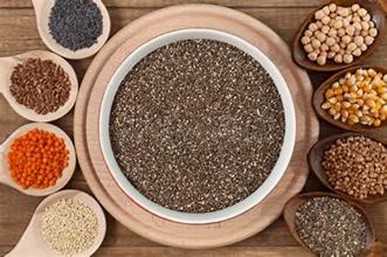By Debbie Roland and
Emmy Ulmschneider
Master Gardeners
Last year we did an article about how to read a plant label. We realized that we also are asked about how to pick the seeds for West Texas and what the seed type means. All seeds are a flowering plant’s method of reproduction. But over time, humans have bred for desirable traits and today, not all seeds are the same. So, let’s look.
Open-Pollinated Seeds: These seeds require pollination by birds, wind and rain, insects, or are even self-pollinating. These seeds breed true producing the same kind of plant as the parent. They are the best choice if you are a “seed saver” because the plant’s traits are stable and easily pass from generation to generation. Their gene pool is diverse which allows them to adapt to local climates and conditions. It is with this kind of seed that roughly 12,000 years ago, humans began selecting for different traits ushering in the beginning of our modern-day agriculture.
Examples: heirloom tomatoes, beans, peas
Heirloom Seeds: These seeds have been grown and passed down through generations usually in a specific region where they perform well. Over time these seeds have been selected to produce plants with superior appearance, flavor, and growth habits for that area. These will be open-pollinated, and the seeds are worth saving since the plants grown from the seeds will be like the parent plant. The heirloom seed which grows well in Illinois may not work well for us in West Texas.
Examples: Chinese Long Beans, Kentucky Wonder Bush Beans, Black Krim Tomato

Hybrid Seeds: Hybridization is the next attempt to improve agriculture. Hybrid seeds result when humans deliberately breed two plants with different characteristics together to produce a new variety. If you see a plant label or packet that says F1, it means that the seed was deliberately created to produce a desired trait. Most vegetable and flower seeds available to the home gardener are hybrids developed for increased vigor or production, resistance to disease, uniformity or some other selected trait. Saving seed from a hybrid plant is not reliable since the resulting plant will not be like the plant that produced the seed and may not produce at all. Hybrids are NOT genetically modified!
Examples: Prizm Kale, Riverside Spinach, Silver Queen Corn
GMO Seeds: (GMO or Genetically Modified Organism) GMO seeds are modified in a laboratory; they are not hybridized. There is much talk about GMO seeds; however, seeds that are packaged for U.S. home gardens and yards are not and cannot be genetically modified. They are only available to commercial growers and the only seeds available are field and sweet corn, canola, soybeans, cotton, alfalfa, papaya, squash, potato, sugar beets and rice.
Organic Seeds: These seeds are grown from plants without the use of non-organic pesticides. This is certified by the National Organic Program (NOP) under the USDA. Growers are required to buy organically produced seed and are not allowed to use GMO seed.
So, how do you put this knowledge to good use in your home garden?
First, decide on your needs! Every gardener’s needs are different. Hybrid seeds means stronger plants with good qualities such as increased production, but you can’t save seeds. Heirlooms will keep the genetic diversity of old vegetables and flowers. Open-pollinated heirlooms will allow you to save and share the seeds and you know what the plant will produce.
Second, READ the seed packet or catalog description! Identify what kind of seed it is by the words open-pollinated, heirloom, or hybrid. F1 means a hybrid and there may also be information about those seed’s specific traits and disease resistance.
Third, purchase your seeds! Purchase seeds for the current year; seed viability goes down over time. Store your seeds correctly so that you give them the best start for your new and improved garden.
If you have questions, call the AgriLife office in Odessa at 498-4071 or in Midland at 686-4700. Additional information, and our blog for access to past articles, is available at westtexasgardening.org. Click on “Resources.”




